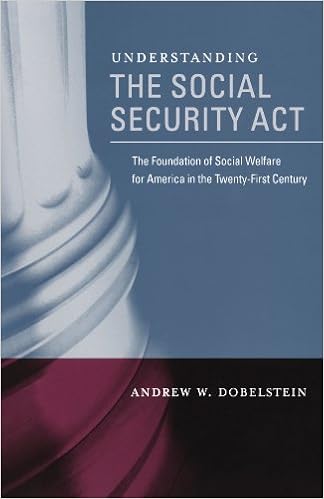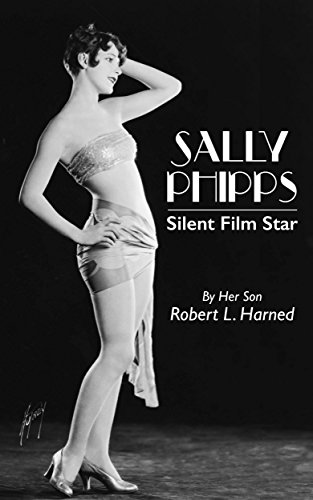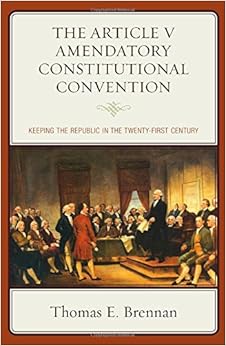On June 29, 2015, the final day of its 2014 term, the US Supreme Court ruled in Glossip v. Gross. The Court, in a 5-4 opinion by Justice Alito, ruled that death-row inmates had failed to establish a likelihood of success on the merits of their claim that the use of midazolam, a sedative in Oklahoma’s lethal injection protocol, violates the Eighth Amendment because it fails to render a person insensate to pain. Today, Glossip is scheduled to die by the controversial method that the Court greenlighted this summer unless there is a stay of execution. The case is likely not the final word on the death penalty. Justice Scalia this week Scalia told students at a Memphis college that he “wouldn’t be surprised” if the Supreme Court ruled the death penalty unconstitutional citing Justice Breyer’s dissent that it is time to consider whether the Eighth Amendment bars capital punishment in all cases.
Breyer is not the first Supreme Court justice to invite constitutional debate about the death penalty. Several justices in Gregg v. Georgia, 428 US 153 (1976) bringing back the death penalty later came to reject it. Justice Powell told his biographer that the death penalty should be abolished. Justice Blackmun, wrote in 1994 that he would no longer “tinker with the machinery of death.” In 2008, Justice Stevens wrote that his review of hundreds of cases had persuaded him that the penalty is both profoundly unworkable and unconstitutional. Justice Breyer in his dissent in Glossip argued that the death penalty is unreliable and arbitrary in application citing the long delays that undermine its purpose, convinced that we have executed the innocent. In Rudolph v. Alabama, 375 U.S. 889, (1963), Justice Goldberg’s dissent also suggested that capital punishment might violate the Eighth Amendment. That dissent prompted statewide moratoriums and encouraged cases to be brought to the Court challenging the constitutionality of capital statutes. A decade later, the Court struck them all down in Furman v. Georgia, 408 U.S. 238 (1972). Perhaps, in the wake of Glossip, we are about to travel down that path once again.
 On the subject of capital punishment, Brooklyn Law School Library has The Trials of Maria Barbella: The True Story of a 19th Century Crime of Passion by Idanna Pucci (Call #HV6053 .P83 1996). This book illustrates the debate over the death penalty in the late 19th Century in the story of the trial of Maria Barbella for the murder of Domenico Cataldo in New York City on April 26, 1895. Maria and her family immigrated to New York in 1892. She met and became friendly with Cataldo, also from the same region of Italy. One day Cataldo took her to a boarding house, drugged her with the drink he bought her, and took advantage of her. With strong morals about intimacy and marriage, Maria said that they would have to get married. He promised they would marry in several months, even though he was already married to a woman in Italy, with whom he had children. Later Cataldo told Maria that he was going back to Italy and would not marry her. When Maria and her mother confronted him and insisted he marry Maria he said the only way he would do that was if they paid him $200. As the mother stormed away, Maria asked, one last time, whether she would be his wife. When he replied that “Only a pig would marry you“, she drew out her razor and killed him by cutting his throat.
On the subject of capital punishment, Brooklyn Law School Library has The Trials of Maria Barbella: The True Story of a 19th Century Crime of Passion by Idanna Pucci (Call #HV6053 .P83 1996). This book illustrates the debate over the death penalty in the late 19th Century in the story of the trial of Maria Barbella for the murder of Domenico Cataldo in New York City on April 26, 1895. Maria and her family immigrated to New York in 1892. She met and became friendly with Cataldo, also from the same region of Italy. One day Cataldo took her to a boarding house, drugged her with the drink he bought her, and took advantage of her. With strong morals about intimacy and marriage, Maria said that they would have to get married. He promised they would marry in several months, even though he was already married to a woman in Italy, with whom he had children. Later Cataldo told Maria that he was going back to Italy and would not marry her. When Maria and her mother confronted him and insisted he marry Maria he said the only way he would do that was if they paid him $200. As the mother stormed away, Maria asked, one last time, whether she would be his wife. When he replied that “Only a pig would marry you“, she drew out her razor and killed him by cutting his throat.
Thus began the saga of Maria Barbella, who shortly became the first woman sentenced to die in the electric chair. She was arrested and put in the New York Halls of Justice and House of Detention (otherwise known as “The Tombs”) for more than two months. Her trial began on July 11. Maria was unable to speak or understand English. She admitted everything: how she slit his throat and how he ran after her, unable to reach her and dropped dead. The jury showed sympathy for her case; but trial Judge John W. Goff asked the jury not to have mercy on Maria. He said, “Your verdict must be an example of justice. A jury must not concern itself with mercy. The law does not distinguish between the sexes. The fragility of the female sex is sometimes involved to excuse savage crimes. We cannot publicly proclaim a woman not guilty of killing a man solely because this man has proposed marriage and then changed his mind!” The jury declared her guilty. On July 18, 1895, Judge Goff sentenced her to “execution by electricity” and sent her to Sing Sing Prison, the first female convict held there in 18 years and the first one on death row.
The case stirred up controversy in the Italian community which felt that the verdict was unjust with no Italians on the jury. Many complained to the Governor about how the trial was handled. On April 21, 1896, the Court of Appeals of New York in People v Barberi, 149 N.Y. 256 (also available on Westlaw Next at this link) ruled that the judgment of conviction should be reversed and a new trial granted. In the second trial at the criminal branch of the New York Supreme Court, she was said to be epileptic and mentally ill because of everything that had happened. She was found not guilty.

 The opinion provides a history of the tune from before 1893, when sisters Mildred and Patty Hill wrote words and music for 73 songs, composed or arranged by Mildred, with words by Patty. They sold or assigned their rights to Clayton F. Summy on Feb. 1, 1893, for 10 percent of retail sales. The songs included “Good Morning to All.” It had the same tune but different words from Happy Birthday. Summy published a songbook that year under the title “Song Stories for the Kindergarten,” and filed a copyright application on Oct. 16, 1893, in which he claimed to own the copyright, but not to be the author. His copyright expired in the 1920s and he did not immediately renew it. A reconstituted company, the Hill Foundation, applied for a new copyright on it in 1934, and a number of lawsuits followed. By then, a number of other companies claimed to own the copyright, including the Board of Sunday Schools of the Methodist Episcopal Church (1912), and the Gospel Trumpet Co. (1928). The opinion states:
The opinion provides a history of the tune from before 1893, when sisters Mildred and Patty Hill wrote words and music for 73 songs, composed or arranged by Mildred, with words by Patty. They sold or assigned their rights to Clayton F. Summy on Feb. 1, 1893, for 10 percent of retail sales. The songs included “Good Morning to All.” It had the same tune but different words from Happy Birthday. Summy published a songbook that year under the title “Song Stories for the Kindergarten,” and filed a copyright application on Oct. 16, 1893, in which he claimed to own the copyright, but not to be the author. His copyright expired in the 1920s and he did not immediately renew it. A reconstituted company, the Hill Foundation, applied for a new copyright on it in 1934, and a number of lawsuits followed. By then, a number of other companies claimed to own the copyright, including the Board of Sunday Schools of the Methodist Episcopal Church (1912), and the Gospel Trumpet Co. (1928). The opinion states: The Brooklyn Law School Library has a wealth of material on the subject of copyright often called a “limited monopoly.” When copyrights grow old and die, the works they protect fall into the public domain. Subject to certain exceptions, public domain works may be freely copied or used in the creation of derivative works without permission, or authorization, of the former copyright owners. One book in the BLS Library collection on copyright and the public domain is
The Brooklyn Law School Library has a wealth of material on the subject of copyright often called a “limited monopoly.” When copyrights grow old and die, the works they protect fall into the public domain. Subject to certain exceptions, public domain works may be freely copied or used in the creation of derivative works without permission, or authorization, of the former copyright owners. One book in the BLS Library collection on copyright and the public domain is  ore on the U.S. Constitution, see the BLS Library copy of
ore on the U.S. Constitution, see the BLS Library copy of 



 Additionally, the BLS Library has in its collection
Additionally, the BLS Library has in its collection  The Brooklyn Law School Library has many titles in its collection on the subject of the Voting Rights Act. The latest is
The Brooklyn Law School Library has many titles in its collection on the subject of the Voting Rights Act. The latest is  In the enjoyment all of the Fourth of July sales, picnics,
In the enjoyment all of the Fourth of July sales, picnics,  cast features former Cataloging Librarian Bob Harned who worked for the Brooklyn Law School Library in Technical Services from 2001 to 2006. Born in Des Moines, Iowa, Bob grew up in Honolulu, Hawaii. A lifelong research librarian, he worked at the Library of Congress in Washington, DC, the University of Pennsylvania in Philadelphia, and in several universities and law firms in New York City. He now resides in Park Slope, Brooklyn, New York, with his partner, food journalist, cookbook author, and broadcaster Arthur Schwartz. Robert’s interests are film history, Greek and Roman archaeology, and singing. He has recorded four CD albums. Since leaving the BLS Library, Bob has been busy with many projects, the most recent of which is the publication of
cast features former Cataloging Librarian Bob Harned who worked for the Brooklyn Law School Library in Technical Services from 2001 to 2006. Born in Des Moines, Iowa, Bob grew up in Honolulu, Hawaii. A lifelong research librarian, he worked at the Library of Congress in Washington, DC, the University of Pennsylvania in Philadelphia, and in several universities and law firms in New York City. He now resides in Park Slope, Brooklyn, New York, with his partner, food journalist, cookbook author, and broadcaster Arthur Schwartz. Robert’s interests are film history, Greek and Roman archaeology, and singing. He has recorded four CD albums. Since leaving the BLS Library, Bob has been busy with many projects, the most recent of which is the publication of  The Brooklyn Law School Library has ordered a new book on the subject for its collection:
The Brooklyn Law School Library has ordered a new book on the subject for its collection:  On the subject of what seems to be the nation’s broken politics and government, two books on the list are
On the subject of what seems to be the nation’s broken politics and government, two books on the list are